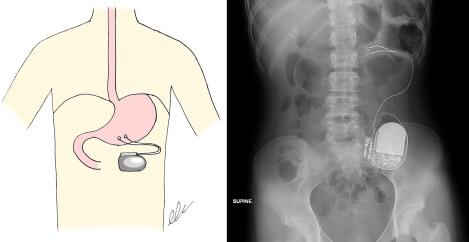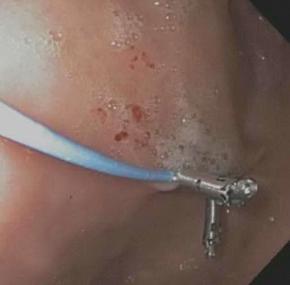Physical Address
304 North Cardinal St.
Dorchester Center, MA 02124
As the use of neuromodulation for the treatment of adults with various gastrointestinal (GI) disorders has grown over the past two decades, so has interest in the application of these treatments to children with GI disorders. Some of the advantages inherent to neuromodulation-based treatments are particularly suited to pediatric patients. For children with severe symptoms refractory to medical treatment, neuromodulation is often less invasive than more traditional surgical treatment options. The ability to adjust neurostimulation parameters and the option to reverse treatment are valuable characteristics when treating children who are still in the process of growth and development. Experience with the use of neuromodulation for treatment of children with GI disorders has been growing over the past decade. However, evidence supporting the use of most neurostimulation-based therapies in children remains limited. In this chapter, we will review three of the more established pediatric applications of neuromodulation for the treatment of GI disorders: gastric electrical stimulation (GES), sacral nerve stimulation (SNS), and abdominal transcutaneous electrical stimulation (TES).
The use of GES to treat children was first described in the late 2000s, not long after the approval of GES by the US Food and Drug Administration (FDA) as a humanitarian device exemption for the treatment of adults with gastroparesis in 2000. GES involves high-frequency, low-energy electrical stimulation delivered through electrodes implanted along the greater curvature of the stomach. These electrodes are connected to a pulse generator that is implanted in a subcutaneous pocket, as shown in Fig. 119.1 . In the majority of children, permanent implantation follows a period of temporary stimulation, during which stimulation is administered through electrodes attached to the gastric mucosa that are connected to a pulse generator that remains external to the patient, as shown in Fig. 119.2 ( ). The precise mechanism of action (MOA) of GES remains unclear. GES does not alter gastric electrical activity as measured by electrogastrography and does not entrain gastric muscle. GES also has not been shown to have a consistent effect on gastric emptying, and symptomatic improvement can occur without normalization of gastric emptying time ( ).


In 2008, Islam et al. published the first case series of children treated with GES. Nine children, ages 8–17, underwent temporary and permanent GES for chronic nausea and vomiting, secondary to gastroparesis. The authors found significant improvements in nausea and vomiting scores and health-related quality of life (QOL) measures. Gastric emptying did not improve, which is consistent with findings from the adult literature ( ). In , Hyman et al. published a case report of a 7-year-old boy who was treated with GES for chronic abdominal pain, nausea, vomiting, and feeding intolerance. In 2011, Elfvin et al. reported using GES in three children, each between 2 and 3 years of age. Each had severe nausea and vomiting that was interfering with functioning and was refractory to medications. All three children tolerated temporary and permanent GES placement and experienced a decrease in vomiting frequency of greater than 50% at 6 months after initiation ( ).
In 2013, Teich et al. and Lu et al. described their experience in using GES to treat 24 children with chronic nausea and vomiting at a single center. Children ranged in age from 4 to 19 years and were followed for a median of 6 months. The authors found significant improvements in symptom severity and frequency, with the largest improvement seen in nausea, and in health-related QOL. Improvement was not affected by baseline, gastric emptying status. The number of children requiring transpyloric feeding decreased from 11 to 3 (a decrease of 73%) and the number of children requiring parenteral nutrition decreased from 6 to 3 (a decrease of 50%). One patient required battery replacement within a year of GES placement ( ).
Islam et al. published a second review of their use of GES in children. Ninety-six patients underwent temporary GES and 66 proceeded to permanent GES. Children ranged in age from 2 to 19 years and their mean follow-up was 3.5 years. The authors found significant improvements in symptom scores at all time points when compared to baseline. Hospitalizations, antiemetic and prokinetic medication use, and dependence on tube feeding had all decreased after >12 months of GES treatment. Eleven children (17%) experienced complications requiring further surgery, with five undergoing lead repositioning and five requiring explant of the device. Thirteen patients (19%) had to undergo device replacement after their battery life expired, which, in each instance, was discovered because of symptom recurrence, leading to evaluation ( ).
Although the available literature suggests that GES is safe and can be effective for children with chronic nausea and vomiting refractory to conventional treatment, the evidence certainly remains very limited. Questions remain that will need to be answered before GES becomes a more established treatment in children. The role of placebo effect in the improvement seen after GES remains unclear, although there is limited evidence in adults and anecdotal evidence in children that symptoms worsen when the stimulator is turned off. A better understanding of which patients are more likely to respond to GES treatment is also needed, particularly as gastric emptying does not predict outcome and given the risk of complications requiring further surgery.
Become a Clinical Tree membership for Full access and enjoy Unlimited articles
If you are a member. Log in here